- 4 Aktuální žádosti o pomoc Poraďte svým kolegům
- Požádejte o pomoc
- Podejte dotaz do fóra
- Vložit hotový případ
- LOG Decoder
Žádost o pomoc
Žádost o pomoc vyplňte, pokud máte rozpracovaný diagnostický případ na konkrétním vozidle, u kterého potřebujete pomoci zjistit skutečnou příčinu závady.
Pro naše nekonvenční metody je nutný základ znalostí a mít vlastní vybavení minimálně pro "logování", lépe však osciloskop. Nejlepší přípravou pro práci jsou naše videoškolení a akademie.
Jak to funguje?
Do online formuláře v jednotlivých krocích vyplníte všechny důležité údaje k případu a poté Vám ostatní registrovaní diagnostici poradí v komentářích*.
Supervizor a moderátoři FCD.eu samozřejmě vše doplňují a kontrolují správnost informací, aby cesta vedla ke správnému cíli.
Požádat o pomocDiagnostický případ
After switching over to CNG, the engine idles on 3. cylinders
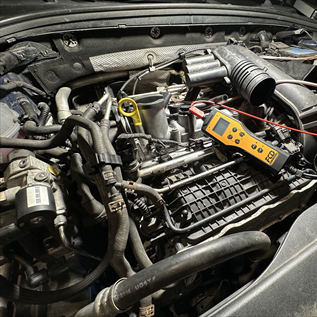
Informace o vozidle
| VIN: | TMBJM7NE3F0112564 |
| Výrobce: | Skoda |
| Model: | Octavia III |
| Rok výroby: | 2014 |
| Kód motoru: | 1,4 CNG |
| Typ motoru: | CPWA |
| Výkon (kW): | 81 kW |
| Převodovka: | Manuální |
| Palivo: | LPG/CNG |
| Najeto: | 194 026 km |
Jak se závada projevuje
Nefunguje / funguje nesprávně. When using CNG, the engine runs on 3. cylinders at idle. It then automatically switches to petrol where the misfire isn't that noticeable.
Nouzový režim.
Jak často se závada projevuje
-
Sporadicky / za specifických podmínek.
- Za jiných podmínek. Only after longer idle periods while running on CNG. The engine runs much smoother on petrol.
V jakém systému se závada vyskytuje
- Motoru.
- během jízdy
- [P336400] Plynový pohon válce 3 - Zjištěny výpadky spalování
- trvalá závada
- sporadická závada
Doposud provedeno bez úspěchu
Customer's statement: In another service centre, they tried replacing the control unit, the lambda sensor, and the piston rings in the cylinders (the entire engine was disassembled because of this). However, the issue still persists after all this work.Závěr
VOZIDLO JSEM NEOPRAVOVAL, PROVÁDĚL JSEM DIAGNOSTICKÉ PRÁCEFour independent clues (photographs of the valves, compression test, cylinder intake capacity, and exhaust pulsations with the ignition disconnected and the starter engaged) typically point to a mechanical problem in the cylinder head, including the valve timing system.
The cylinder head must be removed, and everything needs to be thoroughly inspected—from the camshafts and valve lifters to the valves themselves, valve seats, valve sealing, valve lift, and the combustion chamber.
Obrázky, fotografie a soubory
FCD Mini Testerem was used to verify the CNG valves (18872/1)
When the valves are switched with the same frequency and PWM load, all CNG injection valves produce the same sound.The recording does not indicate any issues with mixture formation (18872/3)
The mixture adaptations are within the allowed range for both petrol and CNG. The permitted range is below 10%, but our maximum deviation is -7% and otherwise it fluctuates around zero. Our continued troubleshooting doesn't need to focus on air intake, intake system sealing, or the fuel system since they are 99% trouble free according to the log.Cylinder #3 has lower compression (18872/4)
Relative compression is pointing to a mechanical issue on cylinder #3.Intake pulsations = cylinder #3 is not sucking (18872/5)
The pressure pattern on the MAP sensor, with the ignition disconnected, the starter cranking, and the intake system manually blocked. One cylinder is not pulling in air – that’s cylinder #3.Photograph of differently colored intake valves on cylinder #3. (18872/6)
The coloration of the valves indicates "different flushing" when the valves overlap compared to the other cylinders.The valve heads of the remaining 3. cylinders are black (18872/7)
The coloration of the other cylinders (1, 2, and 4) is the same—"black."Dynamic air pulsations in the exhaust (ignition disconnected) (18872/8)
Yellow = MAPBlue = Pressure sensor instead of the lambda sensor
Test procedure: The engine is cranked with the starter, the throttle valve is open, and the engine does not start (blocked by disconnecting the ignition modules).
Evaluation: The blue curve shows a different pressure wave pattern compared to the others, indicating a clear mechanical fault in the valve timing system.
Soubory ke stažení
-
pdfDiagnostics – record (18872/2).pdf Cylinder no. 3 showing misfiresStáhnout soubor
-
mwfA recording where everything is visible (18872/9).mwf For self-study (channel names added).Stáhnout soubor




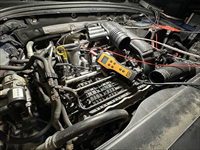
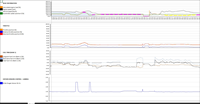
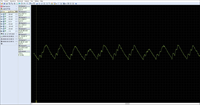
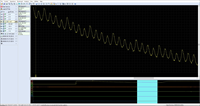
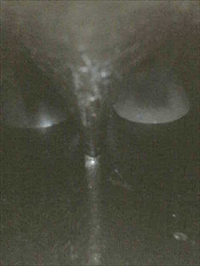
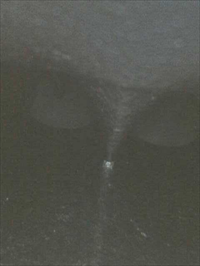
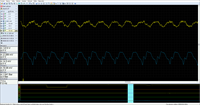

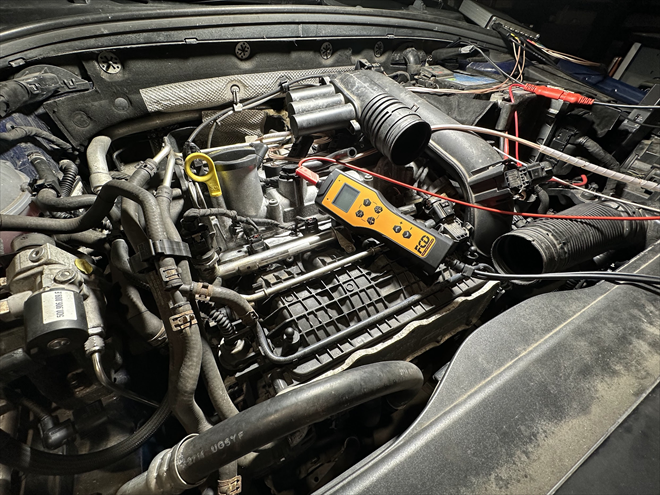
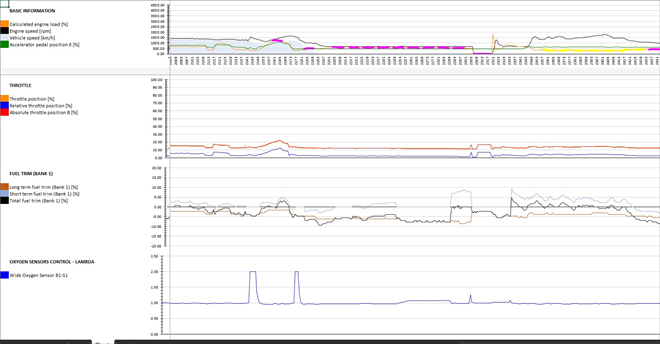
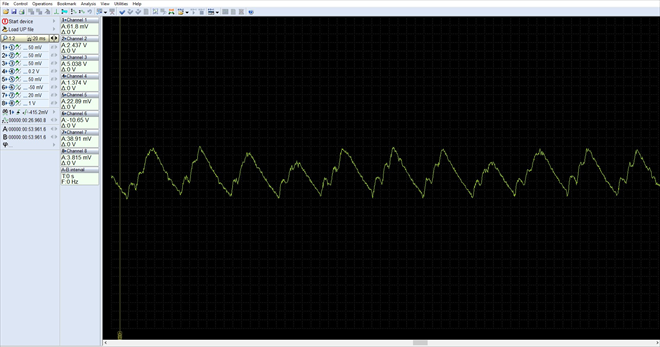
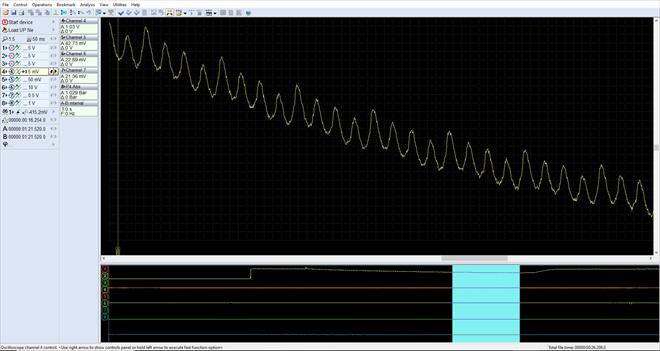
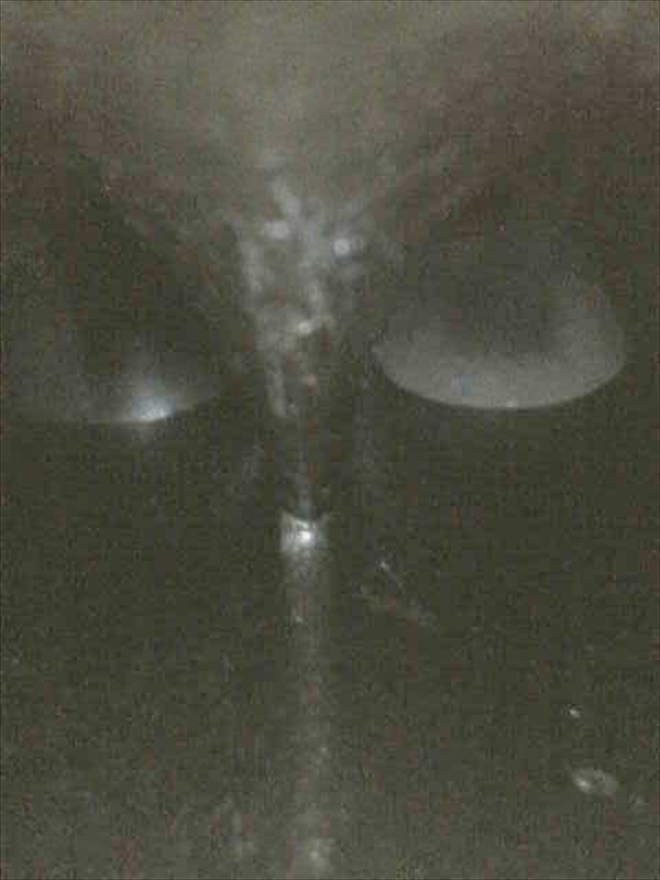
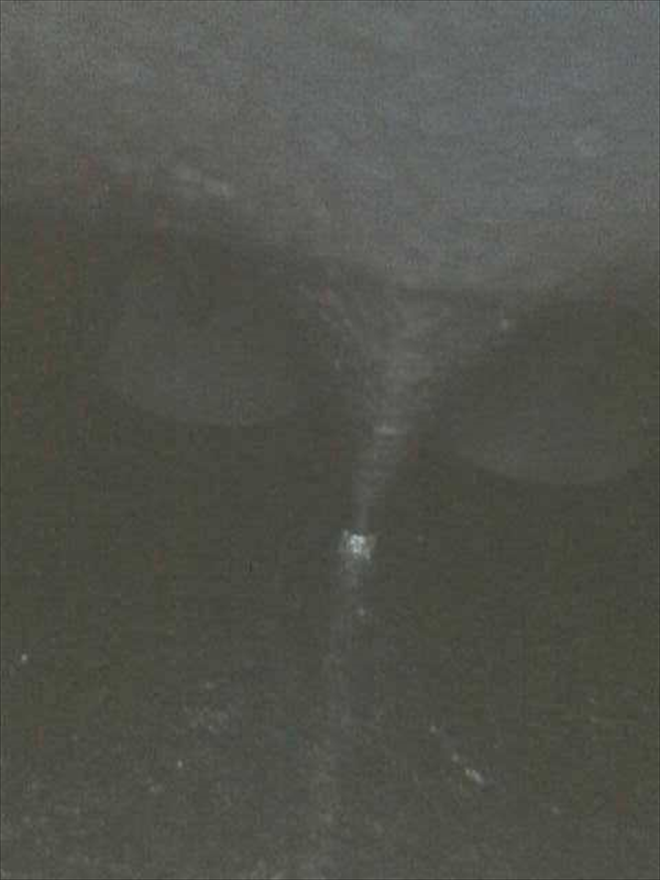
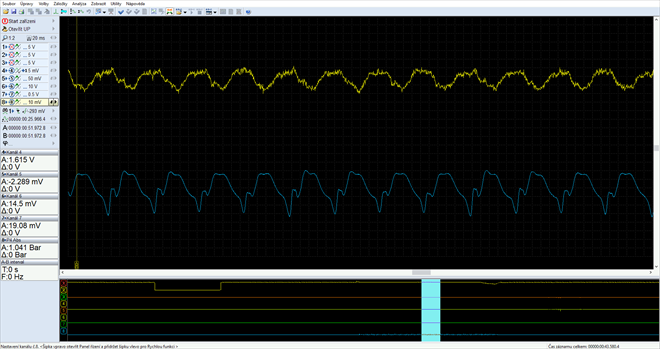
Komentáře (0)